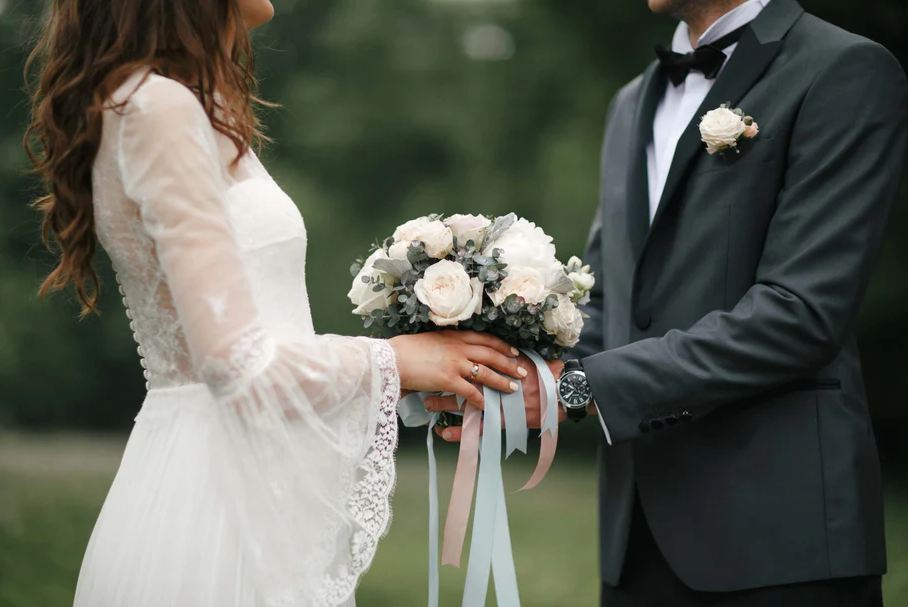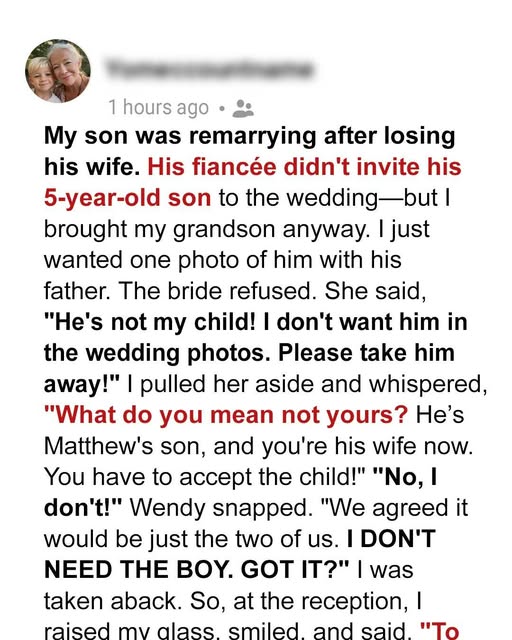My name is Margaret Chen, and at sixty-two years old, I’ve learned that a grandmother’s instincts are sharper than any alarm. After raising four children, enduring nearly four decades of marriage until my husband Robert passed away, and weathering more family turbulence than I can count, I developed what Robert used to call my “trouble radar” a sixth sense when something feels off. When I first met Wendy Richardson, my radar blared like a blaring siren.
One chilly November morning, my son Matthew called to say he was bringing someone special to Sunday brunch. He had lost his wife Sarah to breast cancer and had been trying to raise their son Alex alone. For the past eighteen months, Alex lived with me while Matthew juggled grief and a demanding career. Over time, I came to see just how fragile Alex’s world had become, and I longed for someone who could love him as fiercely as he had loved his mother. But when Wendy arrived at brunch, elegantly dressed and polished, something about her indifference to Alex struck me immediately.

Calculated Presence, Emotional Absence
As the relationship unfolded over the next six months, Wendy became increasingly entwined in Matthew’s life. She redecorated his apartment, escorted him to social events, and reintroduced luxury and style into his world. Yet she never attempted to truly bond with Alex. Her conversations hovered over expensive fabrics, remodeling trends, and her high-powered career — but never about school, hobbies, or how he was coping with the loss of his mother. Alex made every effort: he offered her drawings, tried to include her in his little world. But she responded with rigid politeness that lacked genuine warmth, always pivoting back to adult topics. Gradually, the excitement he once felt over a possible stepmother dimmed. I watched as he retreated toward me, seeking refuge from the cold exclusion.
The Engagement That Left a Gap
When Matthew announced his engagement to Wendy, I shared in his hopefulness — he deserved love again. But my instincts trembled. The engagement party she hosted was immaculate, but Alex was not treated as part of it. I watched him tip over a champagne glass, only to see her mouth a polite “no big deal” while subtly maneuvering the scene toward her vision. When asked about Alex’s role in the ceremony, Wendy brushed it aside, speaking of “simplicity” and “concerns” about a child’s attention span. That’s when I realized: in Wendy’s version of this new life, Alex was a complication.
Quiet Rebellion, Intentional Action
Three weeks before the wedding, I invited Wendy to tea and asked about Alex’s role. She replied unemotionally, “We’ve decided on an adults-only ceremony. He’ll be more comfortable at home.” She called him a “distraction.” My heart broke, and I knew I had to act. I secretly hired a second photographer, James Patterson, specializing in documentary-style photography, to ensure the real story of the day was captured — not just the polished portions. That afternoon, I took Alex shopping for a tiny gray tux with a navy tie. When he asked whether Wendy would like how he looked, I told him, “You look perfect. Anyone would be lucky to have you at their wedding.” His hopeful smile nearly broke me.
The Wedding Day and Uncomfortable Truths
The wedding itself was breathtaking — elegant mansion, sculpted florals, pristine lighting — yet emotionally hollow. When Wendy saw Alex and me arrive, she flinched and whispered, “Why is Alex here? We agreed…” I stayed calm and said, “He’s Matthew’s son. I didn’t agree to keep him away.” The ceremony never mentioned him. But James quietly photographed what the official album would hide: Alex watching with longing, Wendy subtly recoiling when he drew close, and Matthew torn between the two. In formal portraits, Wendy blocked Alex out. She declared he wasn’t allowed in the couple’s photos — “these photos are for Matthew and me.” And then, with shocking clarity, she whispered into the room, “He’s not mine!” The room fell silent. Matthew froze. Alex’s tears welled. Then I gave the toast I had rehearsed. I spoke of marriage being built on growth, acceptance, and inclusion. I spoke of how when you marry someone, you don’t erase their past — you accept it. I lifted my glass to Wendy, reminding her that being a stepmother means choosing to love without reservation. That night, in my beautifully snapped photos, James captured the small, powerful moment when Alex walked to Wendy with flowers and said, “I love you already, Mommy Wendy.” The room shifted.

Awakening, Decisions, and New Beginnings
Three weeks later, I gave Matthew an album of James’s images. They revealed the truth: a bride who avoided her stepson, a child marginalized, and a husband torn. Matthew’s face went from confusion to heartbreak to clarity. “She doesn’t love him,” he whispered. He realized he could not stay with someone who could be a life partner yet intentionally exclude his son. Wendy’s vision for the future went beyond neglect — she admitted hoping to “phase out” Alex via summer camps, distance, and subtle sidelining. The divorce followed swiftly. Matthew and Alex moved into a modest home full of warmth and imperfection — a place where drawings, toys, laughter, and love belong. In time, Matthew met Rebecca, a second-grade teacher who saw Alex’s spark, listened to him, and treated him as fully human from day one. Unlike Wendy, she did not try to overwrite Sarah; she created her own place in Alex’s life through genuine warmth, choice, and inclusion.
Conclusion
A few years later, Matthew and Rebecca held a wedding where Alex was not a forgotten footnote, but an integral part. He walked Rebecca down the aisle when her father could not attend and even delivered a heartfelt speech about their future. The photographs from that day tell a different story — one of belonging, messy love, and truth.

















